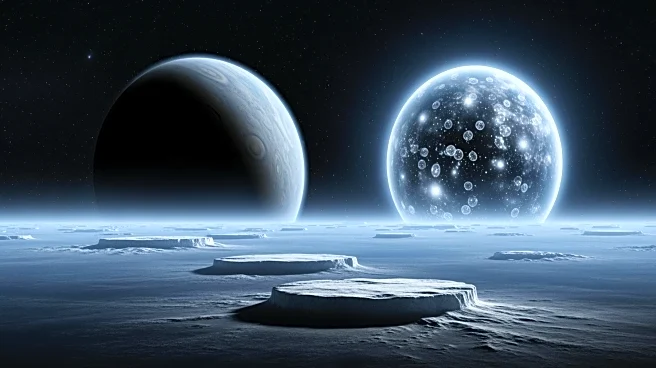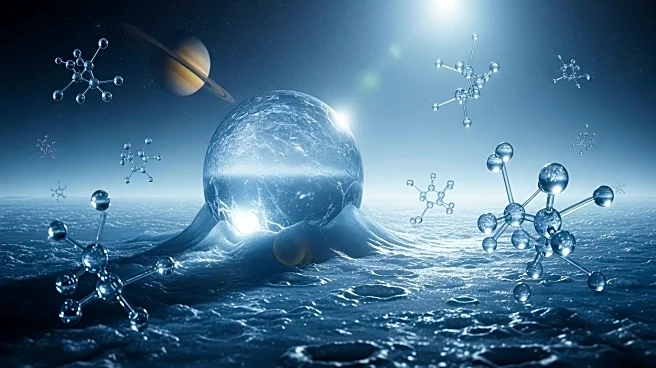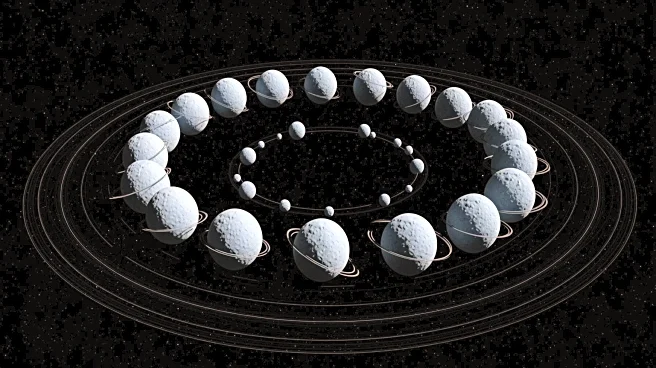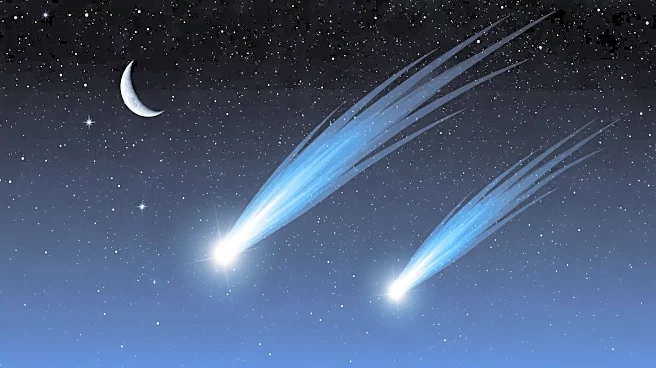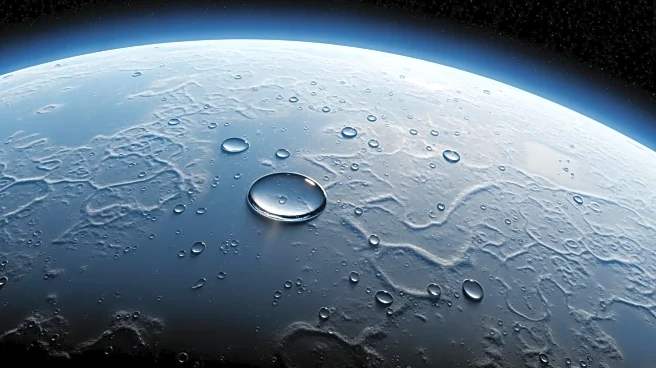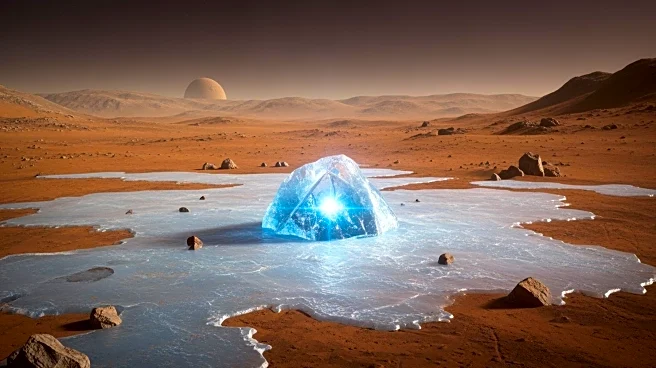What's Happening?
Researchers have discovered unexpected molecular interactions on Saturn's moon Titan, where nonpolar hydrocarbons like methane and ethane mix with hydrogen cyanide (HCN), a highly polar molecule. This
challenges the established rule that polar and nonpolar compounds do not spontaneously mix. The findings suggest new ways to think about chemical interactions at low temperatures, potentially reshaping our understanding of chemical processes in the solar system. Titan's chemistry, with its dense nitrogen and methane atmosphere, is similar to early Earth's atmosphere, making it an analog for studying prebiotic chemistry and the appearance of life.
Why It's Important?
The discovery of molecular mixing on Titan expands our understanding of chemical interactions in extreme environments. HCN plays a role in forming life's building blocks, such as amino acids, which are essential for proteins and genetic material. Understanding these interactions could provide insights into the conditions necessary for life to emerge, both on Earth and potentially on other celestial bodies. The research highlights the importance of studying Titan as a model for early Earth, offering clues to the origins of life and the potential for life in other parts of the solar system.
What's Next?
NASA's Dragonfly mission to Titan, scheduled to launch in 2028, will further explore the moon's surface chemistry and prebiotic processes. The mission aims to measure the compositions of materials on Titan's surface, providing detailed insights into its chemical and geological evolution. Researchers may continue to investigate the implications of Titan's chemistry for understanding life's potential on other planets and moons. The findings could inspire new theories about the conditions necessary for life to develop in diverse environments.
Beyond the Headlines
The study challenges conventional chemical rules, demonstrating that universally accepted principles may not always apply in extreme conditions. This underscores the importance of flexibility in scientific inquiry and the need to consider alternative pathways for chemical interactions. The research also highlights the role of interdisciplinary collaboration in advancing our understanding of planetary science and astrobiology.



